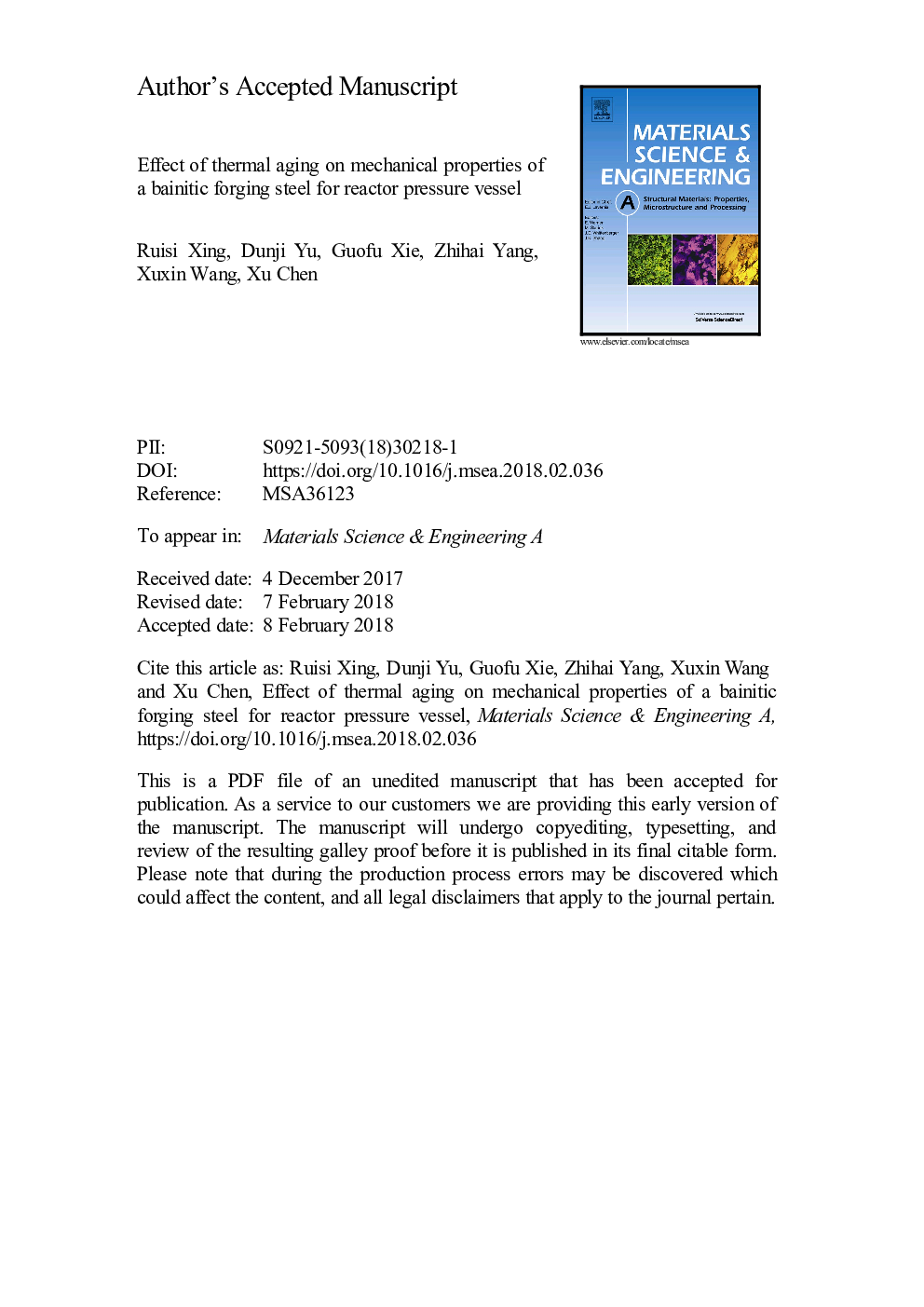| Article ID | Journal | Published Year | Pages | File Type |
|---|---|---|---|---|
| 7973025 | Materials Science and Engineering: A | 2018 | 15 Pages |
Abstract
Vickers hardness, Charpy impact and tensile properties of 16MND5 steel, a bainitic forging steel that is used for nuclear power reactor pressure vessel, were investigated before and after varied thermal aging durations at 350â¯Â°C up to 3000â¯h. After thermal aging for 500â¯h, the steel exhibits a remarkable increase in the ductile-to-brittle transition temperature (DBTT), a slight increase in the hardness, and slight degradations in the yield stress, ultimate tensile strength and elongation at room temperature. These facts indicate thermal aging induced embrittlement of the steel, which are further evidenced by the intergranular cleavage cracks on fracture surfaces in impact tests and a wheel-spokes like fracture morphology in tensile tests. As thermal aging duration is further extended, the embrittlement seems saturated as manifested by consistent DBTTs and fracture morphologies. Based on the metallographic observations and Rietveld refinements of neutron diffraction patterns under different aging conditions, the possible mechanisms of the thermal aging induced embrittlement are discussed.
Related Topics
Physical Sciences and Engineering
Materials Science
Materials Science (General)
Authors
Ruisi Xing, Dunji Yu, Guofu Xie, Zhihai Yang, Xuxin Wang, Xu Chen,
